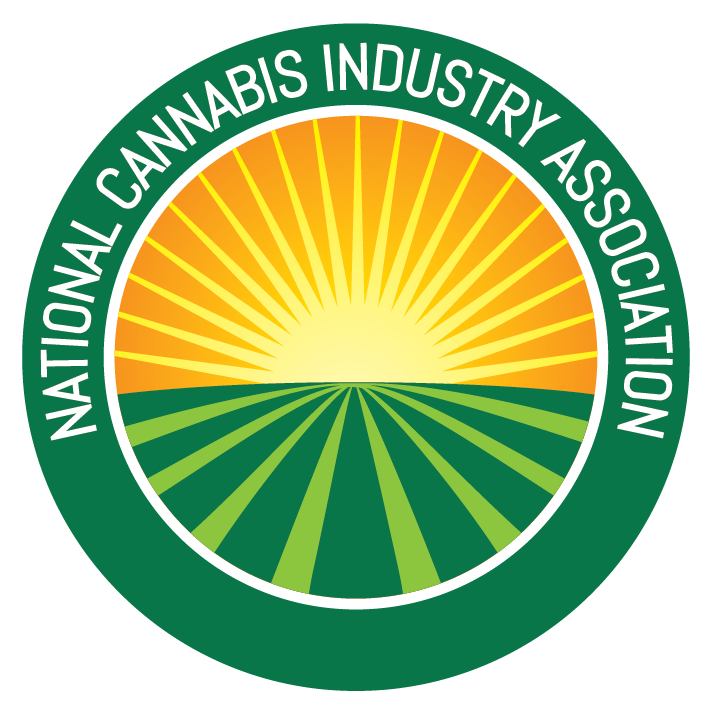Committee Blog: Best Practices Guide – Allergen Labeling

By Brandon Dorsky, The Law Offices of Brandon Dorsky
Member of NCIA’s Packaging and Labeling Committee
Determining which edible to consume is an art all by itself. Making that choice when you suffer from food allergies often makes the decision all the more challenging.
Despite the continued federal illegality of cannabis, cannabis products are still obligated to abide by federal labeling requirements regarding the disclosure and identification of the presence of common allergens, including tree nuts (such as coconut and almonds), peanuts, fish, shellfish, dairy, soy, eggs, and gluten. Labels often do identify the presence of those ingredients and sometimes even the traces thereof. Although companies are seemingly committed to following federal requirements, there is still a continued absence of additional, more specific information that could help individuals with allergies make better-informed decisions when selecting their edibles.
A commitment to providing more information in labeling of common allergens not only helps consumers but also has the propensity to battle the stigma of cannabis as an underground and unregulated industry by embracing more advanced self-regulation and increased transparency. Additional information promotes transparency in the production and packaging processes, and provides valuable information to the discerning customer in addition to promoting better business practices. With roughly one in 20 adults allergic to peanuts or tree nuts, at least 5% of purchasers are directly impacted by the information related to the presence and management of nuts in a manufacturing facility.
In the marketplace today, common label designations include “may contain traces of,” “produced in a facility that also processes” or “produced on equipment that also processes.” Rarely is more information provided. Even though broad strokes disclosures satisfy federal requirements and limit legal liability, they do not do much to inform consumers suffering from allergies who could eat something produced with care, but cannot safely or comfortably consume food products that may contain traces of. With anxiety and paranoia, a potential consequence of cannabis overconsumption, the availability of more information about the presence of allergens on a label could possibly cure or temper an unwarranted freakout. More detailed information could even help avoid emergency room visits and the related trauma and anxiety from experiencing allergic reactions or the vestiges of one. No one enjoys the associated trauma and paranoia of hives in their mouth or wheezing while under the influence of an edible because they ate something that may contain traces of and actually did contain traces of the allergen.
The “may contain traces of” designation is good for the edible manufacturer at discharging potential liability, but it does not do much for consumers that are actually allergic to the items beyond sending the signal that if they consume the product, there is a possibly a legally identifiable amount present within the edible that could potentially trigger a severe allergic reaction. The language provides little information as to why there may be traces of the allergen. For the affected consumer, the business practices used to segregate common allergens or otherwise avoid cross-contamination or contact is what is critical for determining the likelihood and magnitude of the risk of any potential contamination, and therefore the risk presented by the consumption of an edible. This language, while good for insulation from liability, is not informative as to how the traces may have occurred and has the potential to be misleading and deter purchasers that would not be deterred if the label were more accurate at disclosing where in the production chain a potential trace of contamination could have occurred.
Manufacturers currently provide notice if there are “traces of,” or if equipment or a facility contains a common allergen, but they could go further. Four potentially more informative versions of “may contain traces of” or “made on the same equipment as other items that include…” or “made in the same facility as items that include” are:
Produced in a facility, but on separate equipment,
Produced on equipment, that processes INSERT ALLERGEN(S), but using best/reasonable business practices to segregate allergens in the production and storage process.
Produced on equipment, that processes INSERT ALLERGEN(S) where the facility produces products containing allergens on different days than products not containing INSERT ALLERGEN(S).
Produced in a facility that processes INSERT ALLERGEN(S) where the facility produces products containing allergens on different days than products not containing INSERT ALLERGEN(S). All production machinery is cleaned between the productions of different types of edible products.
Cannabis edibles product manufacturers could lead the charge on providing more informative allergen disclosures by promoting the use of more descriptive labeling practices. While such a move may cost fractions of a penny in ink and packaging real estate, the goodwill it could buy is invaluable. The loyalty of the allergy afflicted consumer (and the purchasers who care for or care about them) should not be understated. If a little extra print turns one in 20 customers into a lifetime brand patron, it is probably worth the rub.
 Brandon Dorsky helps clients navigate the constantly evolving global marketplace in a variety of industries, providing strategic, seasoned counsel to facilitate growth, mitigate risk and seize opportunity in the cannabis, fashion, music, entertainment and media industries. Through a wealth of experience, contacts, enthusiasm, and commitment, clients receive carefully tailored legal and consulting services to accelerate their business’s success.
Brandon Dorsky helps clients navigate the constantly evolving global marketplace in a variety of industries, providing strategic, seasoned counsel to facilitate growth, mitigate risk and seize opportunity in the cannabis, fashion, music, entertainment and media industries. Through a wealth of experience, contacts, enthusiasm, and commitment, clients receive carefully tailored legal and consulting services to accelerate their business’s success.
Member Blog: Cannabis Edibles – Preparing for Government Regulations & Inspections

by Martha Ostergar, Content Marketing Manager of RizePoint
Advice from RizePoint, a leader in the quality assurance and regulatory compliance space for over 20 years.
As more states legalize medicinal and recreational marijuana, more companies are getting into the business of cannabis infused food products (CIFPs), more commonly known as edibles. These food products can take many different forms such as baked goods, sweets, oils, capsules, and tablets. As an alternative to smoking or vaping, cannabis-infused products are already on track to become a 5.3 billion-dollar industry over the next five years.
But if cannabusinesses want to get into the edibles production industry, their products need to comply with new cannabis-related city, state, and federal regulations, as well as established regulations for food and pharmaceutical products. The cannabis edibles industry is still in its infancy, and many states are still deciding how to best regulate these new products for public health and safety. This means navigating regulations can be tricky, but there are a few things to keep in mind to stay above board in this developing market.
Evolving Cannabis Edibles Regulations
Cannabis is considered a Schedule 1 controlled substance according to the U.S. Drug Enforcement Administration (DEA), and an “adulterated food product” under the U.S. Food and Drug Administration (FDA). However, the cannabis edibles industry as a whole lacks systematic federal oversight. At this stage, this means that states must decide on how to best regulate these products once voters and legislators have agreed to legalize recreational or medicinal marijuana in each respective state.
This lack of federal oversight can lead to a great deal of confusion in the industry. Nearly 100,000 packages of CIFPs have been recalled over the last few years due to inaccurate labeling, the use of banned pesticides, and other regulatory hiccups. In fact, a recent study of edible label accuracy revealed that 83% of CIFP labels differed from the actual contents of the product by over 10%, and only 17% were labeled correctly.
Key Regulatory Concerns
If cannabusiness owners want to avoid similar quality and compliance issues, they need to make sure they are following their state’s laws and regulations regarding CIFPs. That being said, some states have yet to decide how they will regulate this industry, which can leave businesses on unsure footing or without a viable quality management plan. However, the cannabis industry isn’t totally in the dark — they can look to other industries and resources to create quality-related processes that will help them protect their products, their customers, and their bottom line.
For example, cannabusinesses can look to the National Environmental Health Association (NEHA) for guidance. The NEHA has established a list of regulatory guidelines that states and other regulatory bodies can use as a reference point when drafting legislation.
Here are some examples of regulatory guidelines from NEHA’s list:
- All ingredients used in CIFPs should be from FDA-approved sources, including suppliers that maintain good agricultural, manufacturing, and processing practices.
- All CIFPs should be safe for public consumption and should not exceed the Code of Federal Regulations tolerance levels for controlled substances such as THC.
- CIFPs should be handled in a manner similar to the methods used by the pharmaceutical industry, including accurate product labeling, product homogeneity, and accurate information regarding dose concentration per serving and as a total.
- CIFPs should comply with the food laws laid out by the regulatory body, including portions, labeling, processing, and packaging.
- CIFPs should not be made to appeal to children or those under the age of 21, such as using words like “candy” on product labels and in product advertising.
Additionally, looking to established federal and state regulations in the food and pharmaceutical industries can help businesses proactively understand and set important quality standards until cannabis regulations become more consistent and clear.
CIFP Quality Assurance Management
With these regulatory concerns in mind, cannabis companies can start adjusting their business operations. Proactively creating a quality management plan with high standards and consumer safety in mind is the most important step businesses can take to prepare for official regulations.
The next step is to focus on the supplier quality management process. Whether suppliers or vendors are supplying cannabis ingredients or raw agricultural ingredients, suppliers also need to meet outside regulations as well as internal brand standards that reflect a company’s specific business goals. An edibles business will need to make a plan that includes auditing suppliers at least once a year, collecting relevant and current certifications, and tracking supplier performance.
After that, quality assurance falls to the production process. As mentioned above, government regulations are only part of the quality management process. Each company will have different internal standards they wish to meet that reflect their goals as a brand, including how to produce each product consistently for a better customer experience. This process involves collecting data from yearly or quarterly audits and daily checks as well as taking corrective action when those audit questions or daily checks fail. Best practice includes reviewing and analyzing quality data to proactively understand and improve any failings in the process.
Tools for Cannabis Quality Management
That brief overview may sound like a lot, and frankly, it is. The good news is there are already tools and resources available to help the cannabis industry create and manage quality and compliance processes.
Technology is key. It’s tempting for new CIFP companies to manage everything with pen and paper and spreadsheets as a cost-saving measure. But if you look at the food industry (among many others), it becomes quickly apparent that tech and software are needed to keep up with ever-changing regulations and to properly scale a growing business. Quality management software (QMS) helps businesses gather data efficiently to create a single source of truth. But the right QMS can also help you easily analyze that data so you can spot trends, gain actionable insights, and proactively fix issues before they become bigger problems.
These types of software have helped many other industries with regulatory compliance as well as quality consistency and brand standards. However, not every QMS is created equal, so it’s important to take your time in finding a digital solution that is right for your compliance and quality needs as well as your budget.
Consultants can help. Several cannabis consultancies already exist to help new and seasoned business owners set up and maintain internal programs for regulatory compliance and quality management. Most consultancies will be able to assess and advise cannabusinesses in cultivation, manufacturing, or dispensary management, and some have resources to do all three.
Consultants are not there to set goals for you, but the right consultant can help you achieve your goals. Before contacting a consultant, it’s crucial to think about your specific needs based on your business goals so each party can manage expectations about responsibilities and deliverables. Choose a consultant that gives you a plan upfront that includes a clear timeline as well as the detailed steps you will each take in your partnership to achieve success. It’s also a good idea to be wary of consultants in any industry that ask for payment with equity.
Takeaways
No matter how much rules and regulations change, you can keep a competitive edge with little disruption to you business. If you model your quality management system on other regulated industries — such as food safety and pharmaceuticals — you’ll proactively create a robust, government-friendly plan. Additionally, when you have a comprehensive plan in place, it’s easier to pivot when there are changes, to train new employees to meet the required standards, and to scale your efforts as your business grows.
 Martha Ostergar is the marketing content manager at RizePoint, a quality management software company that has helped top brands to digitally manage compliance, quality assurance, corporate social responsibility, and supplier quality management for over 20 years. Visit RizePoint.com for more information.
Martha Ostergar is the marketing content manager at RizePoint, a quality management software company that has helped top brands to digitally manage compliance, quality assurance, corporate social responsibility, and supplier quality management for over 20 years. Visit RizePoint.com for more information.

 Brandon Dorsky helps clients navigate the constantly evolving global marketplace in a variety of industries, providing strategic, seasoned counsel to facilitate growth, mitigate risk and seize opportunity in the cannabis, fashion, music, entertainment and media industries. Through a wealth of experience, contacts, enthusiasm, and commitment, clients receive carefully tailored legal and consulting services to accelerate their business’s success.
Brandon Dorsky helps clients navigate the constantly evolving global marketplace in a variety of industries, providing strategic, seasoned counsel to facilitate growth, mitigate risk and seize opportunity in the cannabis, fashion, music, entertainment and media industries. Through a wealth of experience, contacts, enthusiasm, and commitment, clients receive carefully tailored legal and consulting services to accelerate their business’s success.

 Martha Ostergar is the marketing content manager at RizePoint, a quality management software company that has helped top brands to digitally manage compliance, quality assurance, corporate social responsibility, and supplier quality management for over 20 years. Visit
Martha Ostergar is the marketing content manager at RizePoint, a quality management software company that has helped top brands to digitally manage compliance, quality assurance, corporate social responsibility, and supplier quality management for over 20 years. Visit